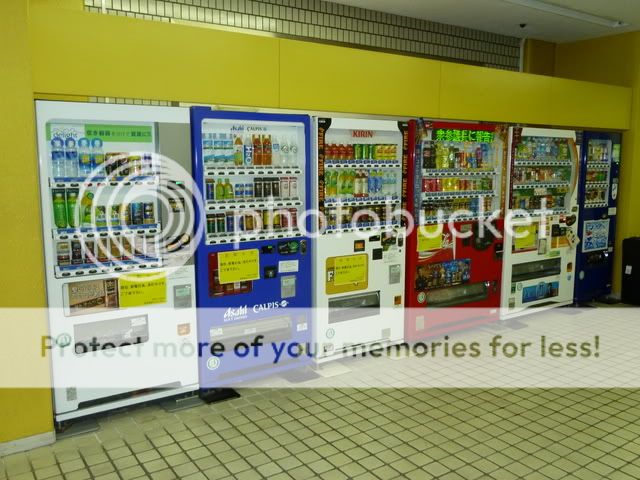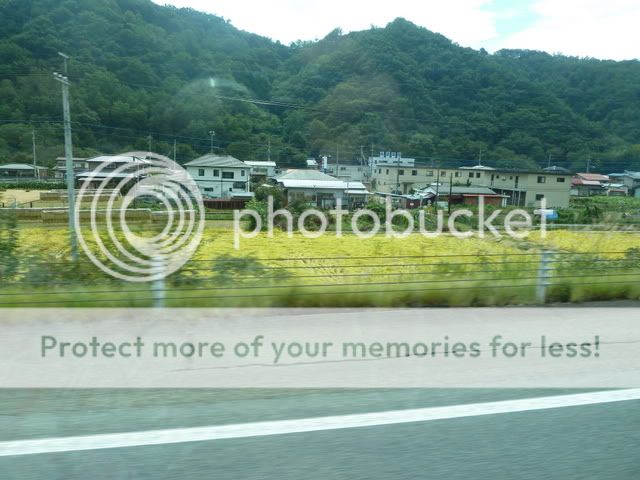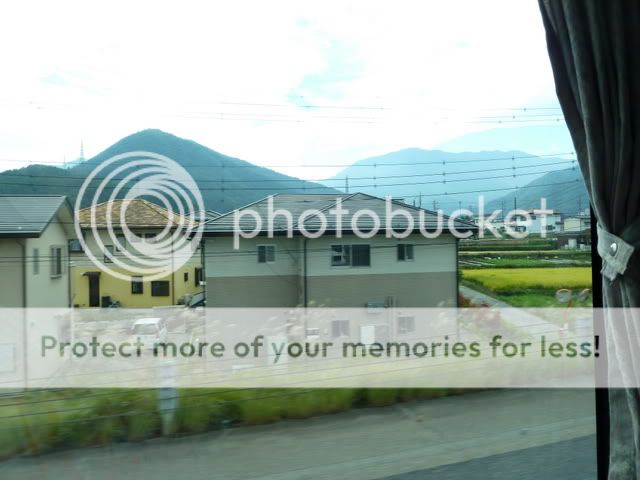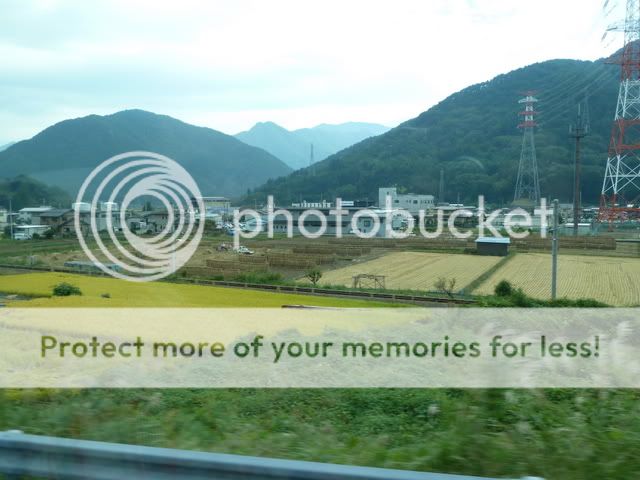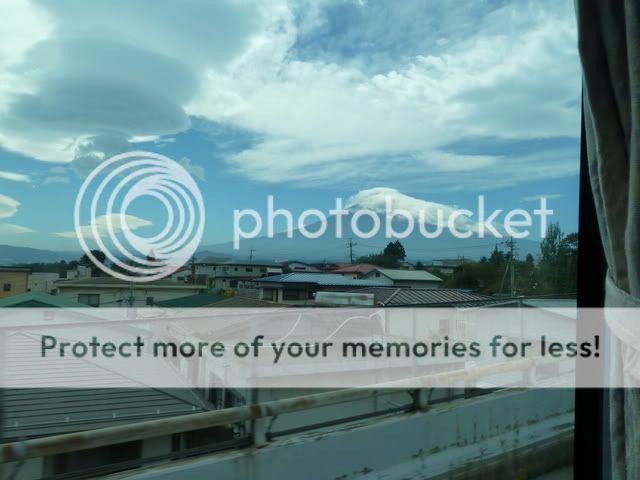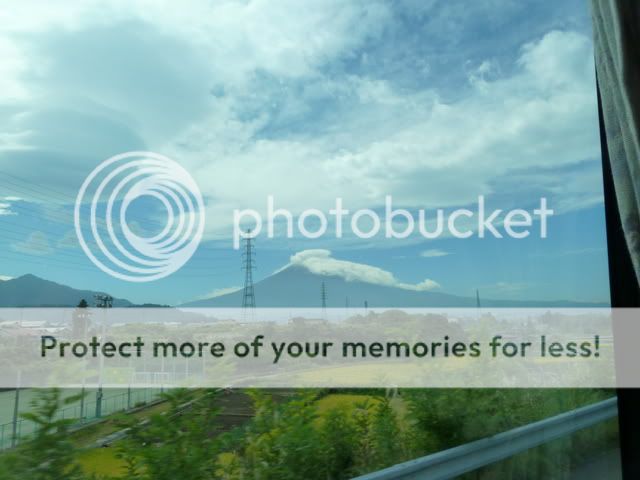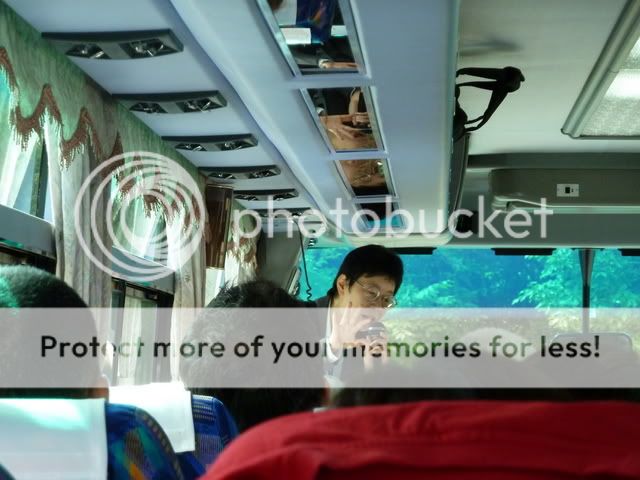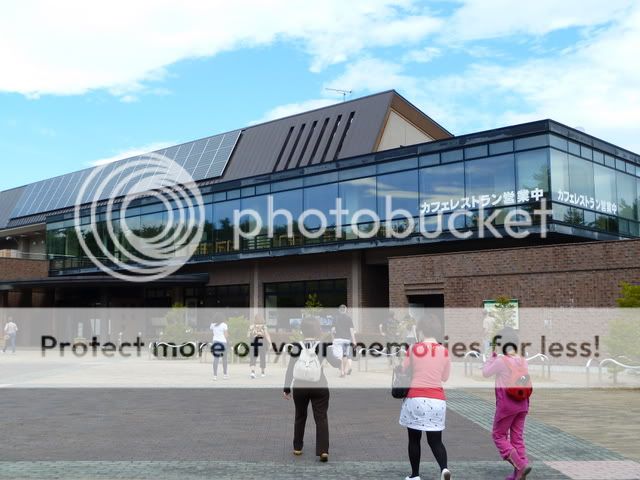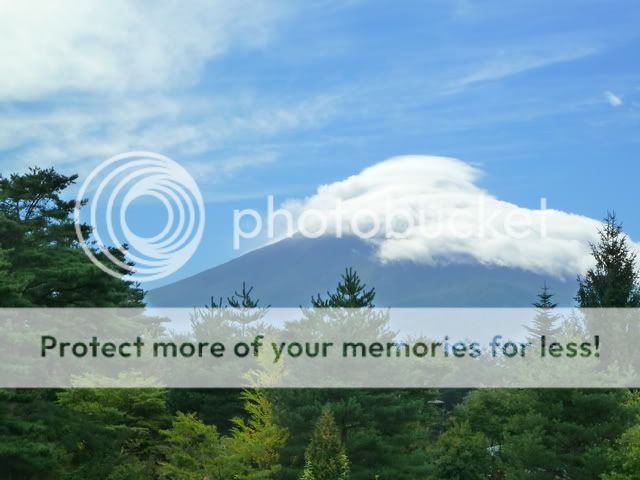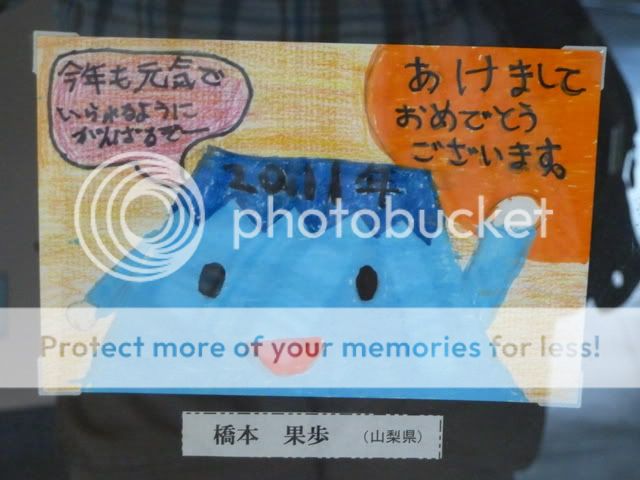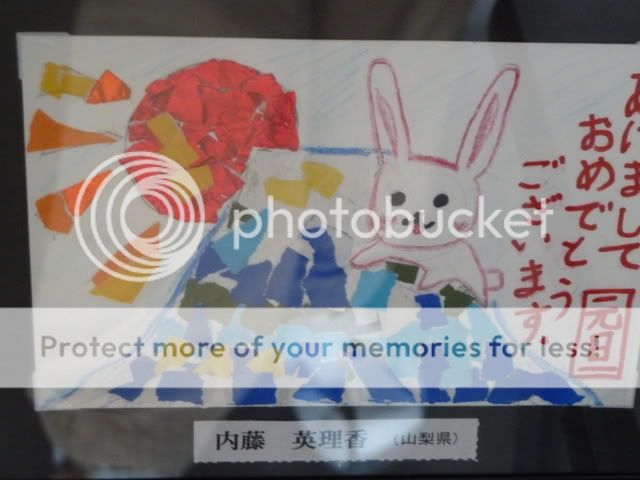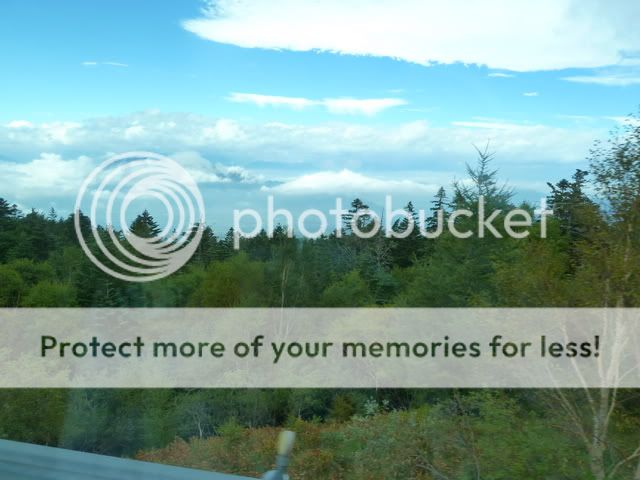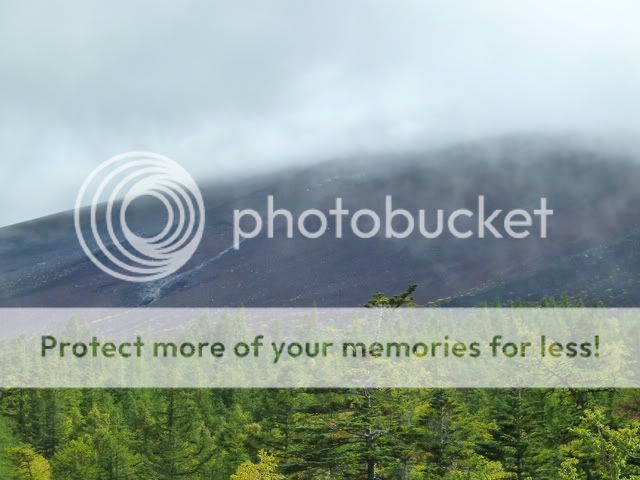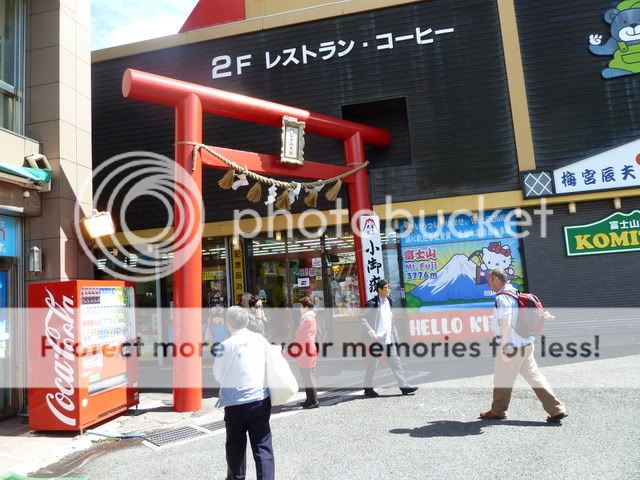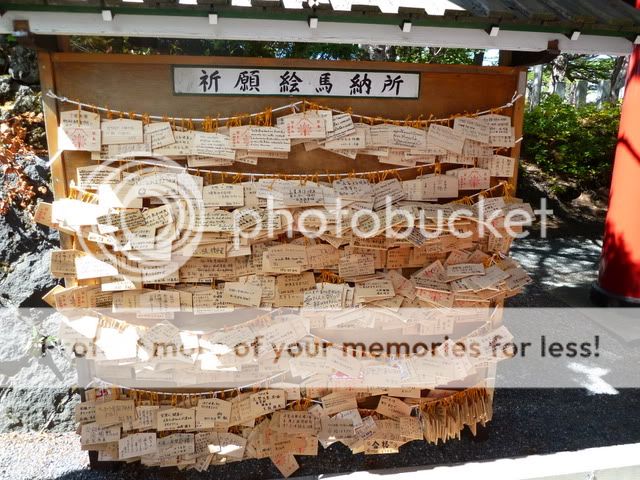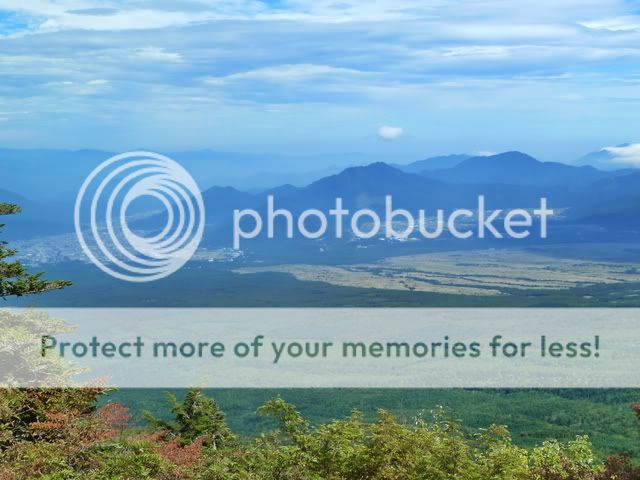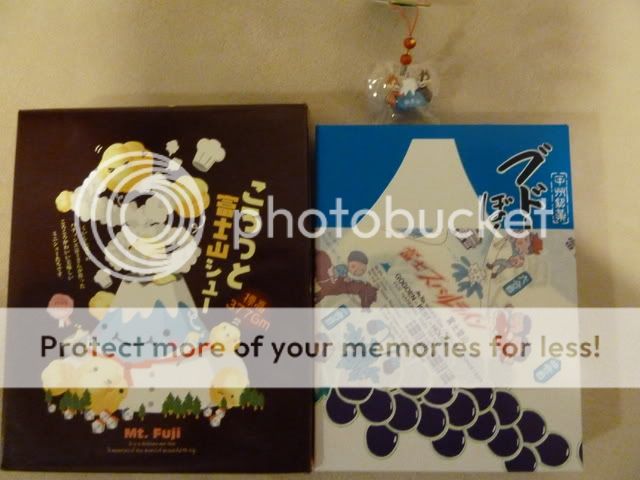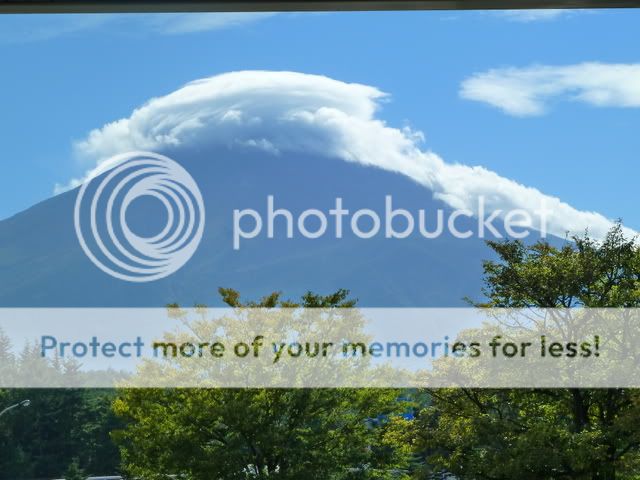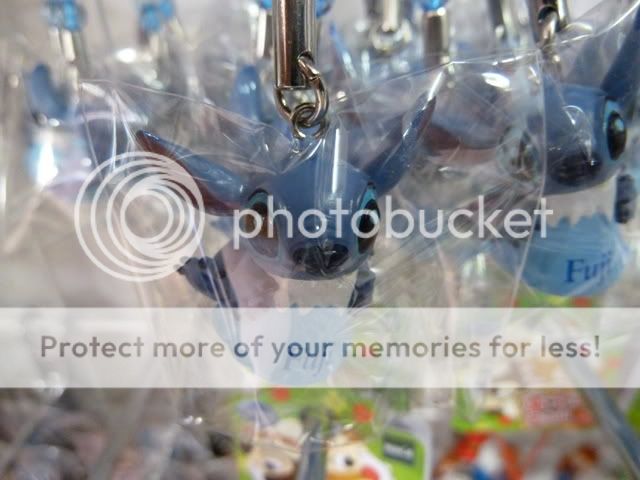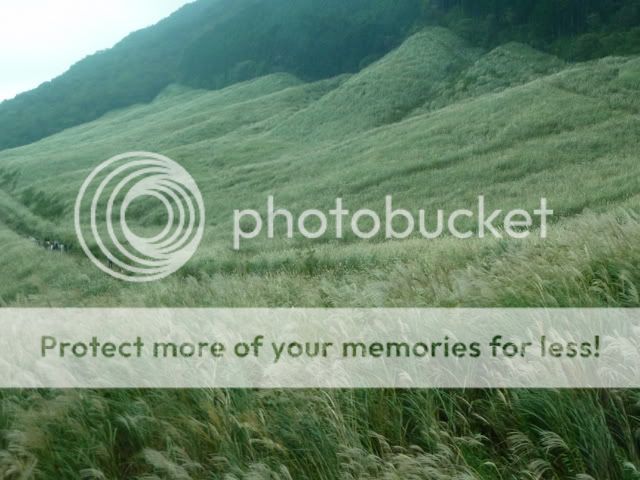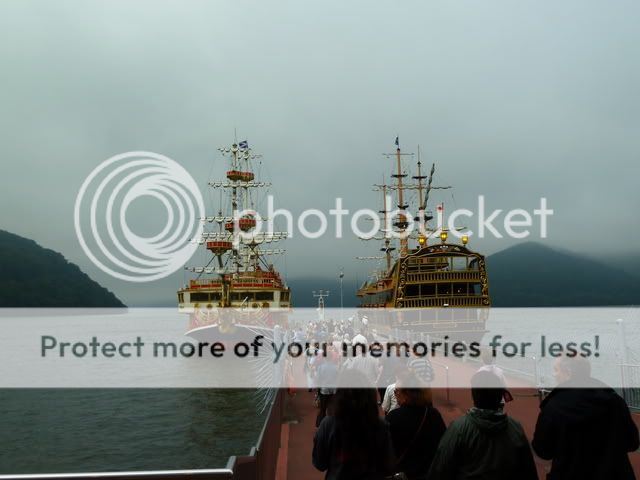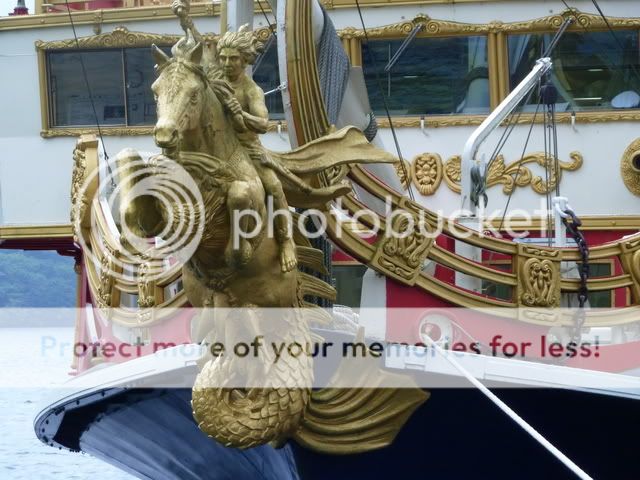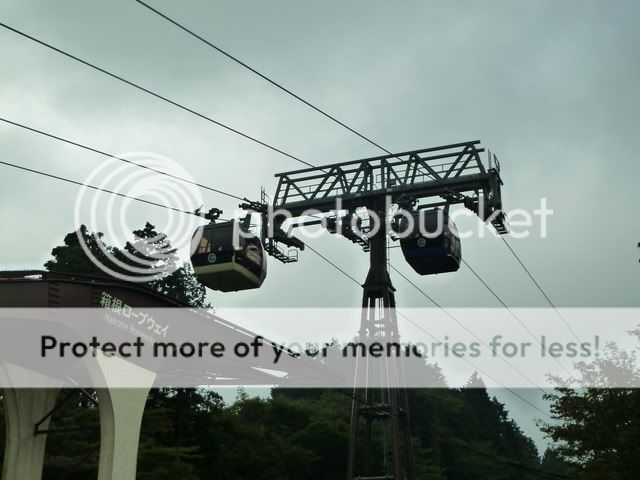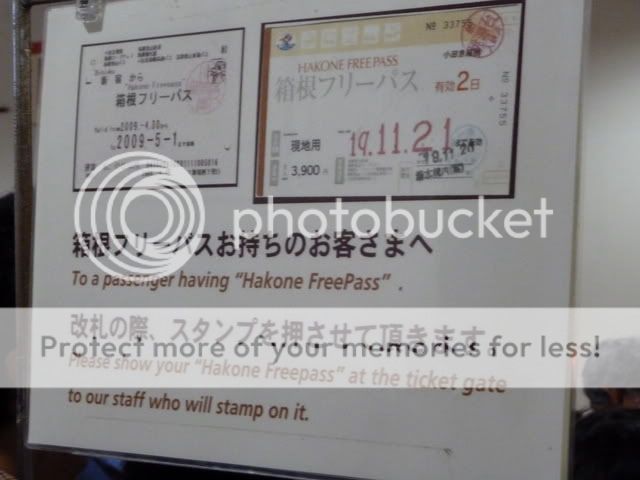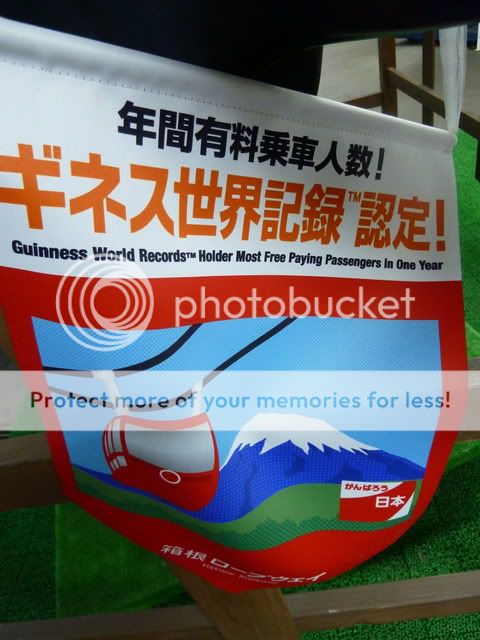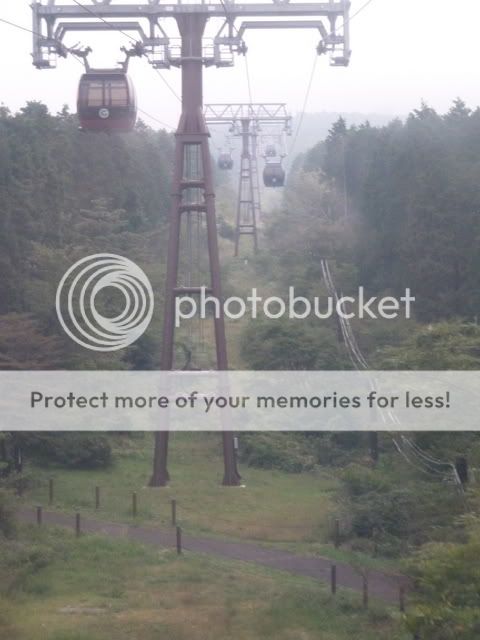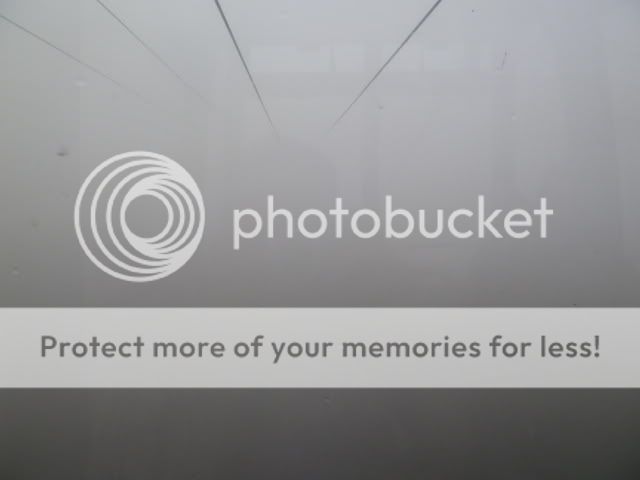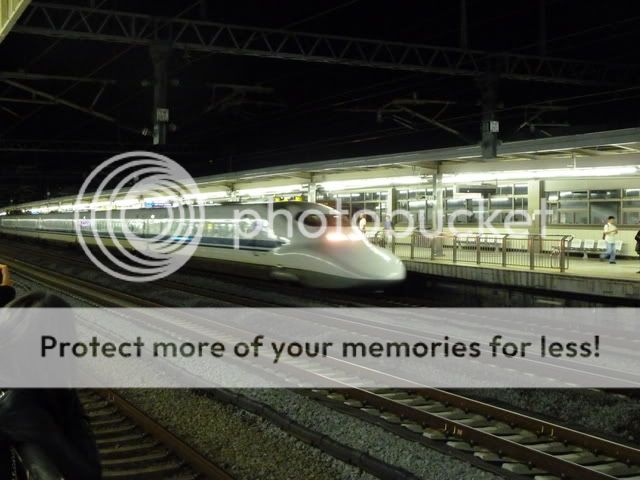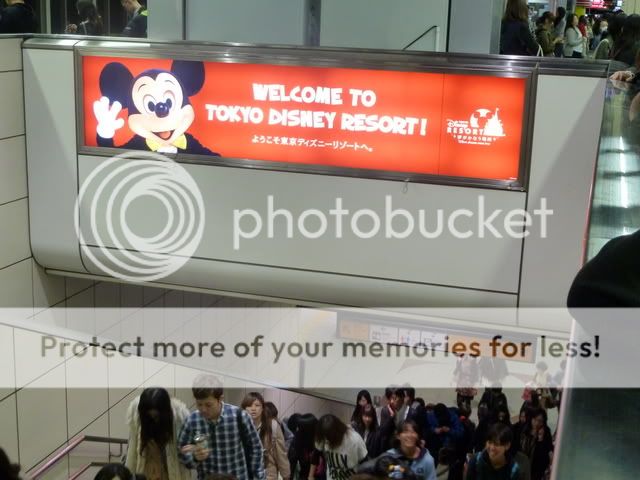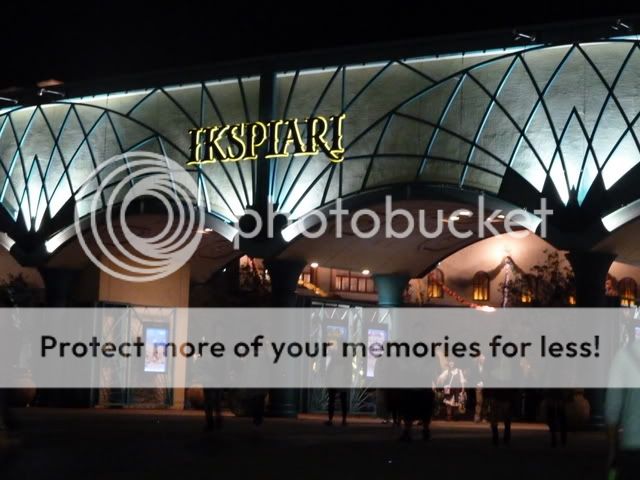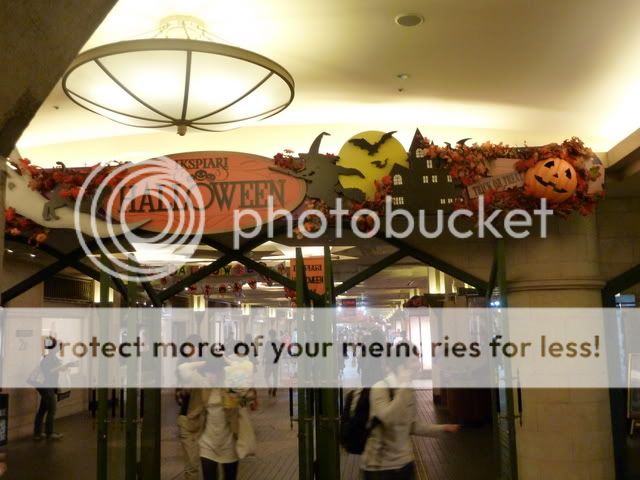swacer
Earning My Ears
- Joined
- Feb 18, 2009
Hello everyone! For starters, I would like to point out that, while I have read innumerable trip reports from others on the DIS, this is the first time I have ever actually written one. I am typically a very dedicated lurker. But, considering the general scarcity of TRs for TDR (though the ones found here are great), I figured I could make an exception and give a little something back. And just maybe our trip can help someone feel better prepared for a trip to Tokyo Disney.
Who are we?
A very philosophical question. But for our purposes, I'm Jon, and along with my boyfriend of 8+ years, we are just a couple of Disney geeks from the Northeast TN/Southwest VA area. We are also big Character fans. A particular character greeting is actually the first seed that was planted, leading to our desire to visit TDR - but we will get to that later.
Trip Info
Dates: September 28, 2011 October 8, 2011
Hotel: Hotel Yanagibasi
This is a great little standard hotel run by extremely friendly people who speak English fairly well. After many hours searching for hotels in our price range (think budget), this hotel's combination of great rate, proximity to both a subway and JR station, and consistently excellent rave reviews made it the winner. We were able to get a twin room for appx $90/night after all taxes and fees. It was not the absolute cheapest option for hotel or room type, so even if you think that is still a little steep, it can be done cheaper. If I ever get to go back, I would not hesitate to stay here again.
Basic Itinerary:
Before we get started, I feel like I should probably give a big Thank You to Lurkyloo for her super-comprehensive trip report. It was a big help when we were working on planning our trip and reading it took up plenty of otherwise boring hours at work.
First, a few planning issues
Finding a hotel -
I have no idea how many hours I spent looking at hotels. From tiny capsules to grand suites and traditional Japanese to Western, Tokyo has every type of accommodation you can think of, and probably some you hadn't thought of (the idea of someone paying to stay in the capsules just seemed crazy to me). And they can range in price greatly depending on location and, mostly, size. The Disney hotels and the Official ones surrounding the resort all seem nice and have generally good reviews, but we were looking to save on the room so we could have that much more to spend. As it turns out, we were so tired every night when we came in, we pretty much just passed out right away then woke up and showered the next morning before having a quick breakfast (that we had usually purchased from a convenience store the night before) and heading out, so we did not need a grand room at all.
From an American perspective, standard hotel rooms in Tokyo are super tiny. It is very hard for me to imagine how a family travels together unless they splurge for the more expensive rooms that are closer to what we are used to. We went for a twin room, which means there were two beds. A room listed as a double room means that it has one double bed. A semi-double has a bed that is slightly smaller than a double bed, but apparently it can technically hold two adults. I like having at least a little space to toss and turn, so we went for the twin even though semi-doubles and doubles can be found for less.
Also, many Japanese hotels that have English websites (or if you are Google-translating your way around their Japanese site) list their rates as per person rather than per room. It turned out to be cheaper for many of the hotels we were considering to book through a site like Expedia, Travelocity, etc... because those rates were listed per room instead of per person. I don't remember the exact amount, but for our hotel we saved a decent amount of yen by booking through Expedia as opposed to the hotel website's per person rate (we chose Expedia over others only because of a bonus rebate they were offering at the time that our booking qualified for). The only other time I have ever used Expedia to actually book a hotel (I use it a lot to compare and then book elsewhere) turned out to be a disaster and I was very nervous about using it, but everything went very well with the reservation.
I researched the different areas/neighborhoods a lot, searched through Tokyo hotels, and narrowed it down to the ones that seemed to be what we were looking for and were also in an area that we would be happy with. With Tokyo's amazingly efficient and comprehensive public transportation system, nearly anywhere can be a good location as long as you have a train or subway station nearby.
Getting Around
Nowhere in the US has a transportation system that comes even close to matching Tokyo's. The major lines run every 2-3 minutes during the busiest times and even during slower times and on the less popular lines, it is never very long before the next train comes by. They also run on time a train being behind schedule is very rare, not something to be expected as it is here.
The train and subway maps seem daunting at first look, but they really are very simple to figure out. While there are some maps out there to download that include both the major rail and subway lines on one (which is good because sometimes you may need to use both to get where you are going), I found it much easier to study them separately. Separately, it is easier to follow each individual line, and once I had a basic idea of the stations and general layout, it was easy to match the two up with which stations they share.
Information on the subway and the route map can be found at http://www.tokyometro.jp/en/ This is the website for the Tokyo Metro, one of two major subway systems in Tokyo. The other, the Toei Subway, is included on the map found here, and the two are highly integrated with each other to the point where, unless you are specifically looking for signs of it, it is difficult to know which one you are using (though Tokyo Metro lines are slightly cheaper than Toei lines, and both are slightly more expensive than JR lines).
Information on the JR train lines can be found at www.jreast.co.jp/e/ and the route map is at www.jreast.co.jp/e/info/map_a4ol.pdf (I only list this separately as I found it a little difficult to find the actual downloadable map on the site).
All three companies offer day passes good for unlimited rides with that particular company (there is also a more expensive one that can be used on all three). Usually, though, unless you plan on doing a lot of separate trips during the day, it is cheaper to simply pay as you go. I think there is only one day where, looking back, we may have saved some money by purchasing one, and even then it would only have been a savings of about 100-200yen.
To plan out routes, I spent a lot of time on this website: http://www.jorudan.co.jp/english/norikae/ It was amazingly helpful in giving multiple options for routes between our hotel and everywhere we wanted to go. When you search, it gives results for the cheapest route, the simplest route, and the fastest route. I also found an Android app called Japan Trains that did the same thing that I played with a lot as well when I didn't have my computer.
As has been pointed out before, getting from station to station is extremely easy the hard part is figuring out which exit to use once you are at that station. The underground network is so extensive that taking the wrong exit could leave you lost and absolutely nowhere near where you wanted to be. Luckily, there are yellow signs in the stations that list which exit to take for particular attractions (some guidebooks or online guides will mention which exit to use when they list which station to use for a location). Also, in most places, especially the ones where tourists would typically want to go, there are large maps on the street once you come out of the exit which list buildings/attractions/stores/etc with a You Are Here marker that is very helpful.
Suica/Pasmo
Think pre-paid debit card for transportation. Very simple to use. Just touch it to the area labeled IC on the station gates as you enter and exit and it automatically deducts the value from what you have loaded on the card and shows you on a little screen how much is left on your card. They can be purchased and reloaded at any station from the ticket vending machines. If you are getting one for the first time, be sure to look for the machines with labels indicating they dispense cards. While all the machines can be used to add value to a card you already have, not every single one actually dispenses new cards. It doesn't matter which one you get -- both can be used interchangeably within Tokyo and the surrounding area (though if you plan on traveling within the rest of Japan, Suica is somewhat more accepted as it is the one offered through JR, which runs train lines across the country). We had PASMO, though after seeing the cute penguin mascot for Suica, I wish I had gotten that one instead (no disrespect to the PASMO robot). When the trip is over, you can return the card at any station (most likely at the airport) to get a refund of any remaining value on your card (minus a fee of approximately 210 yen for the use of the card well worth it to not have to buy a separate ticket every single time you take a train or subway).
Be sure to have cash. Whether you are buying/reloading a Suica/PASMO card or buying an individual ticket, the ticket vending machines do not accept credit cards.
Okane (Money)
I very rarely have much, if any, cash on me at home. This won't do in Japan. While many places do accept cards, there are still many that will only accept cash (even some that you would never expect to accept only cash).
Before leaving, we had bought ¥18000 through Wells Fargo Foreign Currency Exchange. They offered the best rate I could find online and we did not want to arrive with nothing at all just in case it took us a while to find an ATM that we could use after we arrived. Turned out we should have exchanged all the money we needed with them at that time. While the exchange rate you get through a bank ATM is generally better since it will be the inter-bank rate, based on the drops in the US dollar and the rise of the Japanese yen between the time we exchanged that first amount and the time we went on the trip, we would have been much better off exchanging sooner (even including the extra fees for the exchange).
I discovered my bank charged a fee of 3% plus $5 per transaction on foreign ATM withdrawals. I was not about to pay that, so we opened a checking account with Ally Bank and put our money for the trip in there. Their foreign ATM transaction fee is only 1% and no separate fixed fee. It may be possible to find one with 0% and no minimum balance requirement, but I wasn't able to find one and Ally was really easy to work with.
Not every Japanese ATM will work with foreign debit cards. The ones that do include ATMs at 7-Eleven, Citibank branches, the airport, and some department stores and malls (there may be others, these are just the ones that I noticed). A 7-Eleven is always easy to find (they are a Japanese-based company and very prevalent in the city), so even though every ATM won't work, one that will is never too far away.
As for credit cards, Capital One offers a 0% foreign transaction fee. Since we both already had Capital One cards, that was no problem. We tried our best to use a credit card at every place that would accept one since we were getting the inter-bank exchange rate with no fee.
Rental Phone
Technically, my Sprint phone would have worked, but even when paying for the international add-on for a reduced rate, it was going to be more expensive to use my own phone than to rent one. Renting a phone in Japan is surprisingly easy and cheap.
There are many different companies offering rental phones in Japan. The rental fees and call charges vary greatly, so doing your research is very important.
We rented phones from two different companies. The first from Rentafone Japan (http://www.rentafonejapan.com/index.html) and the second from Mobal Narita (https://www.mobalnarita.com/).
Rentafone Japan charged ¥3900 for the first week plus ¥300 per day afterwards. Calls made to the US by using their discount calling dial-around number (a number you put in before the number you are dialing) were ¥45 per minute. The discount number was printed on a label on the back of the phone, so we didn't have to memorize it. They delivered the phone directly to our hotel and it was waiting for us when we checked in. They also included a prepaid envelope to return it at the end of the trip. We just put it in the envelope and gave it to the guy at the desk when we checked out and asked him to put it in the mail for us. This was the company we found with the most reasonable international calling rates. Their website is very informative and we were very satisfied with their service. Incoming calls were free, though we never had any incoming calls.
While we didn't get it, they also offer pocket WiFi for mobile internet at very reasonable rates (with a discount if you are also renting a phone from them). If I had known that the internet at the hotel was going to be super slow and only work sporadically, I would have taken one of these as well.
We also rented one from Mobal Narita. Mobal has a counter in the arrival terminal at Narita where you pick up and return the phone. Mobal offers completely free rental of the phone and you only pay if you make calls. Call charges are rather steep though, at ¥240 per minute. Since we had the paid rental from Rentafone with low call charges, we only took the free rental from Mobal so that we could both have a phone in case we were separated and needed to get in touch with each other. For calls back home, we used only the Rentafone one, but it was nice to know that if we needed it, we had a way to call each other. Luckily nothing happened to make that necessary, so absolutely no money ended up being exchanged between us and Mobal. Incoming calls were also free for this phone, so technically, if you only needed a phone for incoming calls, you could use it all you wanted and still not pay a single penny (or, rather, a single yen).
I am sure I have not covered everything, but if I go on anymore, you might fall asleep and drown in your coffee. I can't have that on my conscience. If you have any questions, feel free to ask. I will try to answer...or at least make up a good answer if I don't have one.
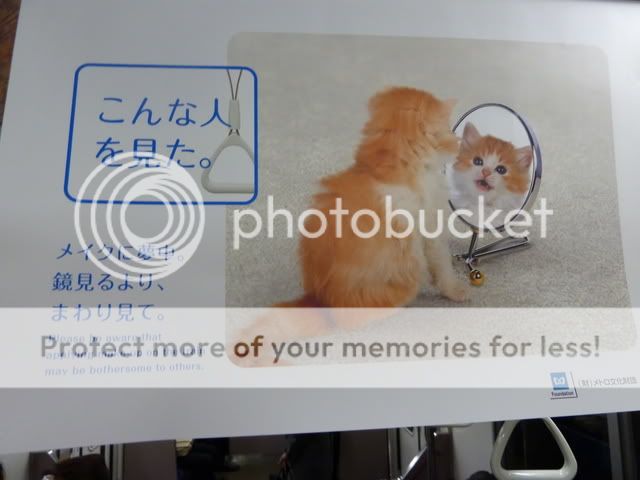
Who are we?
A very philosophical question. But for our purposes, I'm Jon, and along with my boyfriend of 8+ years, we are just a couple of Disney geeks from the Northeast TN/Southwest VA area. We are also big Character fans. A particular character greeting is actually the first seed that was planted, leading to our desire to visit TDR - but we will get to that later.
Trip Info
Dates: September 28, 2011 October 8, 2011
Hotel: Hotel Yanagibasi
This is a great little standard hotel run by extremely friendly people who speak English fairly well. After many hours searching for hotels in our price range (think budget), this hotel's combination of great rate, proximity to both a subway and JR station, and consistently excellent rave reviews made it the winner. We were able to get a twin room for appx $90/night after all taxes and fees. It was not the absolute cheapest option for hotel or room type, so even if you think that is still a little steep, it can be done cheaper. If I ever get to go back, I would not hesitate to stay here again.
Basic Itinerary:
- Sept 28/29 Travel

- Sept 30 Mt Fuji, Epson Aqua Stadium, and Ikspiari
- Oct 1 Ueno, Asakusa, Tokyo River Cruise, Odaiba
- Oct 2 Shinjuku, Ikebukuro, Harajuku, and Shibuya
- Oct 3 Imperial Palace tour, Yokohama
- Oct 4 Tokyo Disneyland
- Oct 5 Tokyo DisneySea
- Oct 6 Tokyo Disneyland
- Oct 7 Tokyo DisneySea
- Oct 8 Quick trip to Asakusa, Travel home

Before we get started, I feel like I should probably give a big Thank You to Lurkyloo for her super-comprehensive trip report. It was a big help when we were working on planning our trip and reading it took up plenty of otherwise boring hours at work.
First, a few planning issues
Finding a hotel -
I have no idea how many hours I spent looking at hotels. From tiny capsules to grand suites and traditional Japanese to Western, Tokyo has every type of accommodation you can think of, and probably some you hadn't thought of (the idea of someone paying to stay in the capsules just seemed crazy to me). And they can range in price greatly depending on location and, mostly, size. The Disney hotels and the Official ones surrounding the resort all seem nice and have generally good reviews, but we were looking to save on the room so we could have that much more to spend. As it turns out, we were so tired every night when we came in, we pretty much just passed out right away then woke up and showered the next morning before having a quick breakfast (that we had usually purchased from a convenience store the night before) and heading out, so we did not need a grand room at all.
From an American perspective, standard hotel rooms in Tokyo are super tiny. It is very hard for me to imagine how a family travels together unless they splurge for the more expensive rooms that are closer to what we are used to. We went for a twin room, which means there were two beds. A room listed as a double room means that it has one double bed. A semi-double has a bed that is slightly smaller than a double bed, but apparently it can technically hold two adults. I like having at least a little space to toss and turn, so we went for the twin even though semi-doubles and doubles can be found for less.
Also, many Japanese hotels that have English websites (or if you are Google-translating your way around their Japanese site) list their rates as per person rather than per room. It turned out to be cheaper for many of the hotels we were considering to book through a site like Expedia, Travelocity, etc... because those rates were listed per room instead of per person. I don't remember the exact amount, but for our hotel we saved a decent amount of yen by booking through Expedia as opposed to the hotel website's per person rate (we chose Expedia over others only because of a bonus rebate they were offering at the time that our booking qualified for). The only other time I have ever used Expedia to actually book a hotel (I use it a lot to compare and then book elsewhere) turned out to be a disaster and I was very nervous about using it, but everything went very well with the reservation.
I researched the different areas/neighborhoods a lot, searched through Tokyo hotels, and narrowed it down to the ones that seemed to be what we were looking for and were also in an area that we would be happy with. With Tokyo's amazingly efficient and comprehensive public transportation system, nearly anywhere can be a good location as long as you have a train or subway station nearby.
Getting Around
Nowhere in the US has a transportation system that comes even close to matching Tokyo's. The major lines run every 2-3 minutes during the busiest times and even during slower times and on the less popular lines, it is never very long before the next train comes by. They also run on time a train being behind schedule is very rare, not something to be expected as it is here.
The train and subway maps seem daunting at first look, but they really are very simple to figure out. While there are some maps out there to download that include both the major rail and subway lines on one (which is good because sometimes you may need to use both to get where you are going), I found it much easier to study them separately. Separately, it is easier to follow each individual line, and once I had a basic idea of the stations and general layout, it was easy to match the two up with which stations they share.
Information on the subway and the route map can be found at http://www.tokyometro.jp/en/ This is the website for the Tokyo Metro, one of two major subway systems in Tokyo. The other, the Toei Subway, is included on the map found here, and the two are highly integrated with each other to the point where, unless you are specifically looking for signs of it, it is difficult to know which one you are using (though Tokyo Metro lines are slightly cheaper than Toei lines, and both are slightly more expensive than JR lines).
Information on the JR train lines can be found at www.jreast.co.jp/e/ and the route map is at www.jreast.co.jp/e/info/map_a4ol.pdf (I only list this separately as I found it a little difficult to find the actual downloadable map on the site).
All three companies offer day passes good for unlimited rides with that particular company (there is also a more expensive one that can be used on all three). Usually, though, unless you plan on doing a lot of separate trips during the day, it is cheaper to simply pay as you go. I think there is only one day where, looking back, we may have saved some money by purchasing one, and even then it would only have been a savings of about 100-200yen.
To plan out routes, I spent a lot of time on this website: http://www.jorudan.co.jp/english/norikae/ It was amazingly helpful in giving multiple options for routes between our hotel and everywhere we wanted to go. When you search, it gives results for the cheapest route, the simplest route, and the fastest route. I also found an Android app called Japan Trains that did the same thing that I played with a lot as well when I didn't have my computer.
As has been pointed out before, getting from station to station is extremely easy the hard part is figuring out which exit to use once you are at that station. The underground network is so extensive that taking the wrong exit could leave you lost and absolutely nowhere near where you wanted to be. Luckily, there are yellow signs in the stations that list which exit to take for particular attractions (some guidebooks or online guides will mention which exit to use when they list which station to use for a location). Also, in most places, especially the ones where tourists would typically want to go, there are large maps on the street once you come out of the exit which list buildings/attractions/stores/etc with a You Are Here marker that is very helpful.
Suica/Pasmo
Think pre-paid debit card for transportation. Very simple to use. Just touch it to the area labeled IC on the station gates as you enter and exit and it automatically deducts the value from what you have loaded on the card and shows you on a little screen how much is left on your card. They can be purchased and reloaded at any station from the ticket vending machines. If you are getting one for the first time, be sure to look for the machines with labels indicating they dispense cards. While all the machines can be used to add value to a card you already have, not every single one actually dispenses new cards. It doesn't matter which one you get -- both can be used interchangeably within Tokyo and the surrounding area (though if you plan on traveling within the rest of Japan, Suica is somewhat more accepted as it is the one offered through JR, which runs train lines across the country). We had PASMO, though after seeing the cute penguin mascot for Suica, I wish I had gotten that one instead (no disrespect to the PASMO robot). When the trip is over, you can return the card at any station (most likely at the airport) to get a refund of any remaining value on your card (minus a fee of approximately 210 yen for the use of the card well worth it to not have to buy a separate ticket every single time you take a train or subway).
Be sure to have cash. Whether you are buying/reloading a Suica/PASMO card or buying an individual ticket, the ticket vending machines do not accept credit cards.
Okane (Money)
I very rarely have much, if any, cash on me at home. This won't do in Japan. While many places do accept cards, there are still many that will only accept cash (even some that you would never expect to accept only cash).
Before leaving, we had bought ¥18000 through Wells Fargo Foreign Currency Exchange. They offered the best rate I could find online and we did not want to arrive with nothing at all just in case it took us a while to find an ATM that we could use after we arrived. Turned out we should have exchanged all the money we needed with them at that time. While the exchange rate you get through a bank ATM is generally better since it will be the inter-bank rate, based on the drops in the US dollar and the rise of the Japanese yen between the time we exchanged that first amount and the time we went on the trip, we would have been much better off exchanging sooner (even including the extra fees for the exchange).
I discovered my bank charged a fee of 3% plus $5 per transaction on foreign ATM withdrawals. I was not about to pay that, so we opened a checking account with Ally Bank and put our money for the trip in there. Their foreign ATM transaction fee is only 1% and no separate fixed fee. It may be possible to find one with 0% and no minimum balance requirement, but I wasn't able to find one and Ally was really easy to work with.
Not every Japanese ATM will work with foreign debit cards. The ones that do include ATMs at 7-Eleven, Citibank branches, the airport, and some department stores and malls (there may be others, these are just the ones that I noticed). A 7-Eleven is always easy to find (they are a Japanese-based company and very prevalent in the city), so even though every ATM won't work, one that will is never too far away.
As for credit cards, Capital One offers a 0% foreign transaction fee. Since we both already had Capital One cards, that was no problem. We tried our best to use a credit card at every place that would accept one since we were getting the inter-bank exchange rate with no fee.
Rental Phone
Technically, my Sprint phone would have worked, but even when paying for the international add-on for a reduced rate, it was going to be more expensive to use my own phone than to rent one. Renting a phone in Japan is surprisingly easy and cheap.
There are many different companies offering rental phones in Japan. The rental fees and call charges vary greatly, so doing your research is very important.
We rented phones from two different companies. The first from Rentafone Japan (http://www.rentafonejapan.com/index.html) and the second from Mobal Narita (https://www.mobalnarita.com/).
Rentafone Japan charged ¥3900 for the first week plus ¥300 per day afterwards. Calls made to the US by using their discount calling dial-around number (a number you put in before the number you are dialing) were ¥45 per minute. The discount number was printed on a label on the back of the phone, so we didn't have to memorize it. They delivered the phone directly to our hotel and it was waiting for us when we checked in. They also included a prepaid envelope to return it at the end of the trip. We just put it in the envelope and gave it to the guy at the desk when we checked out and asked him to put it in the mail for us. This was the company we found with the most reasonable international calling rates. Their website is very informative and we were very satisfied with their service. Incoming calls were free, though we never had any incoming calls.
While we didn't get it, they also offer pocket WiFi for mobile internet at very reasonable rates (with a discount if you are also renting a phone from them). If I had known that the internet at the hotel was going to be super slow and only work sporadically, I would have taken one of these as well.
We also rented one from Mobal Narita. Mobal has a counter in the arrival terminal at Narita where you pick up and return the phone. Mobal offers completely free rental of the phone and you only pay if you make calls. Call charges are rather steep though, at ¥240 per minute. Since we had the paid rental from Rentafone with low call charges, we only took the free rental from Mobal so that we could both have a phone in case we were separated and needed to get in touch with each other. For calls back home, we used only the Rentafone one, but it was nice to know that if we needed it, we had a way to call each other. Luckily nothing happened to make that necessary, so absolutely no money ended up being exchanged between us and Mobal. Incoming calls were also free for this phone, so technically, if you only needed a phone for incoming calls, you could use it all you wanted and still not pay a single penny (or, rather, a single yen).
I am sure I have not covered everything, but if I go on anymore, you might fall asleep and drown in your coffee. I can't have that on my conscience. If you have any questions, feel free to ask. I will try to answer...or at least make up a good answer if I don't have one.
For now, I present a public service announcement brought to you by the Tokyo Metro Foundation and this adorable kitty

 Can't wait to read about your trip!!!
Can't wait to read about your trip!!!

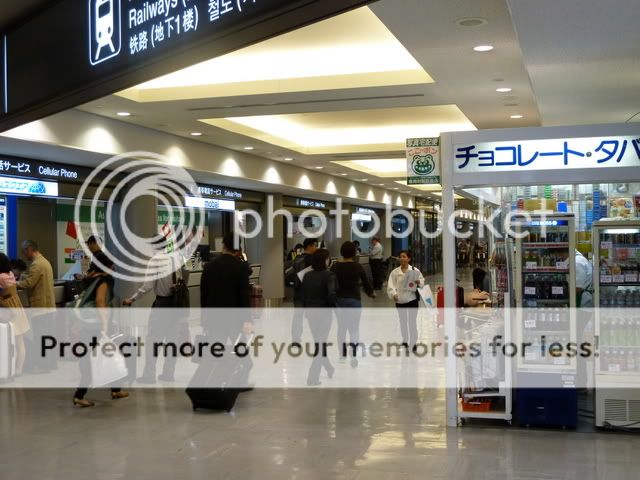



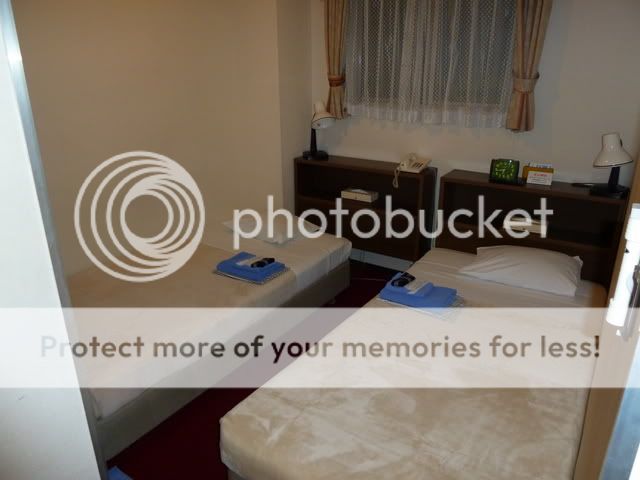
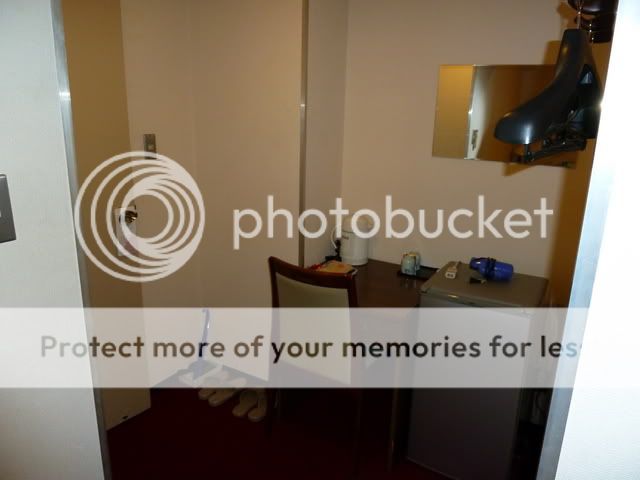


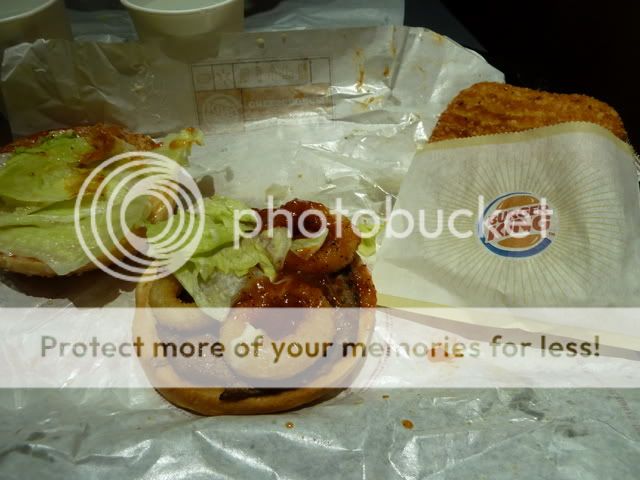
 In our next episode...Mt Fuji!
In our next episode...Mt Fuji!

